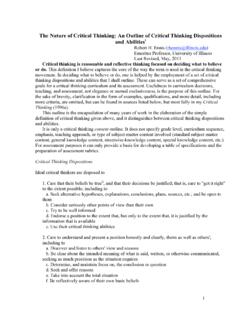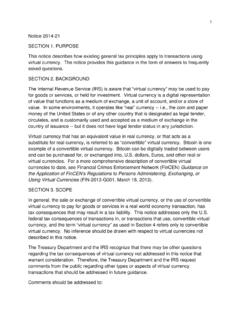Transcription of The Interpersonal Communication Book
1 FIFTEENTH EDITIONJ oseph A. DeVitoHunter College of the City University of New YorkThe Interpersonal Communication 111/8/17 6:00 PMDirector, Portfolio Management: Karon BowersContent Producer: Barbara CappuccioContent Developer: Angela KaoPortfolio Manager Assistant: Dea BarbieriProduct Marketer: Christopher BrownField Marketer: Kelly RossContent Producer Manager: Melissa FeimerContent Development Manager: Sharon GearyManaging Editor: Maggie BarbieriContent Developer, Learning Tools: Amy WetzelDesigner: Kathryn FootDigital Studio Course Producer.
2 Amanda SmithFull-Service Project Manager: SPi GlobalCompositor: SPi GlobalPrinter/Binder: LSC Communications, Inc. Cover Printer: Phoenix Color/HagerstownCover Designer: Lumina Datamatics, Images: 4x6/GettyImages; drbimages/GettyImages Acknowledgments of third party content appear on pages 398 400, which constitutes an extension of this copyright 2019, 2016, 2013 by Pearson Education, Inc. or its affiliates. All Rights Reserved. Printed in the United States of America. This publication is protected by copyright, and permission should be obtained from the publisher prior to any pro-hibited reproduction, storage in a retrieval system, or transmission in any form or by any means, electronic, mechanical, pho-tocopying, recording, or otherwise.
3 For information regarding permissions, request forms and the appropriate contacts within the Pearson Education Global Rights & Permissions department, please visit , ALWAYS LEARNING, and Revel are exclusive trademarks in the and/or other countries owned by Pearson Education, Inc. or its otherwise indicated herein, any third-party trademarks that may appear in this work are the property of their respective owners and any references to third-party trademarks, logos or other trade dress are for demonstrative or descriptive purposes only.
4 Such references are not intended to imply any sponsorship, endorsement, authorization, or promotion of Pearson s prod-ucts by the owners of such marks, or any relationship between the owner and Pearson Education, Inc. or its affiliates, authors, licensees or of Congress Cataloging-in-Publication DataNames: DeVito, Joseph A., : The Interpersonal Communication book / Joseph A. DeVito, Hunter College of the City University of New : 15th edition. | Boston : Pearson Education, Inc., 2017. | Includes bibliographical references and : LCCN 2017037905 | ISBN 9780134623108 | ISBN 013462310 XSubjects: LCSH: Interpersonal : LCC D49 2017 | DDC LC record available at 18 Instructor s Review Copy:ISBN-10: 0-13-462446-7 ISBN-13: 978-0-13-462446-4 Access Code Card:ISBN 10: 0-13-462444-0 ISBN 13: 978-0-13-462444-0 la carte Edition:ISBN-10: 0-13-462439-4 ISBN-13: 978-0-13-462439-6 Student Rental Edition:ISBN 10: 0-13-462310-XISBN 13: 211/8/17 6.
5 00 PMPART ONE Preliminaries to Interpersonal Communication 1 1 Foundations of Interpersonal Communication 1 2 Culture and Interpersonal Communication 29 3 Perception of the Self and Others 55 PART TWO Interpersonal Messages 87 4 Verbal Messages 87 5 Nonverbal Messages 116 6 Listening 157 7 Emotional Messages 181 8 Conversational Messages 205 PART THREE Interpersonal Relationships 236 9 Interpersonal Relationship Stages, Communication , and Theories 236 10 Interpersonal Relationship Types 267 11 Interpersonal Conflict and Conflict Management 303 12 Interpersonal Power and Influence 327 Brief Contents 311/8/17 6.
6 00 PMContentsSpecialized Contents viiiWelcome to The Interpersonal Communication Book ixPART ONE Preliminaries To Interpersonal Communication 1 1 Foundations of Interpersonal Communication 1 The Benefits of Studying Interpersonal Communication 2 Personal Benefits 2 Professional Benefits 2 The Elements of Interpersonal Communication 4 Source Receiver 5 Messages 7 Channel 9 Noise 10 Context 11 Effects 12 Ethics 13 The principles of Interpersonal Communication 16 Interpersonal Communication Exists on a Continuum 16 Interpersonal Communication Involves Interdependent Individuals 17 Interpersonal Communication Is Inherently Relational 17 Interpersonal Communication Is a Transactional Process 18 Interpersonal Communication Serves a Variety of Purposes 19 Interpersonal Communication Is Ambiguous 21 Interpersonal Relationships May Be Symmetrical or Complementary 22 Interpersonal Communication Refers to Content and Relationship 22 Interpersonal Communication Is a Series of Punctuated Events 24 Interpersonal
7 Communication Is Inevitable, Irreversible, and Unrepeatable 24 Summary 27 Key Terms 28 2 Culture and Interpersonal Communication 29 Culture 30 The Importance of Cultural Awareness 30 The Transmission of Culture 34 The Aim of a Cultural Perspective 34 Cultural Differences 37 Individual and Collective Orientation 39 High- and Low-Context Cultures 40 Power Distance 40 Masculine and Feminine Cultures 41 High-Ambiguity-Tolerant and Low-Ambiguity- Tolerant Cultures 42 Long- and Short-Term Orientation 42 Indulgence and Restraint 43 principles for Effective
8 Intercultural Communication 45 Educate Yourself 46 Recognize Differences 47 Confront Your Stereotypes 48 Reduce Your Ethnocentrism 49 Recognize Culture Shock 50 Adjust Your Communication 51 Summary 53 Key Terms 53 3 Perception of the Self and Others 55 The Self in Interpersonal Communication 56 Self-Concept 56 Self-Awareness 58 Self-Esteem 60 Perception in Interpersonal Communication 64 Stage One: Stimulation 65 Stage Two: Organization 65 Stage Three: Interpretation Evaluation 66 Stage Four: Memory 67 Stage Five: Recall 67 Impression Formation 69 Impression Formation Processes 69 Increasing Accuracy in Impression Formation 74 Impression Management: Goals and Strategies 78To Be Liked: Affinity-Seeking and Politeness Strategies 411/8/17 6.
9 00 PMContents vSilence 136 Spatial Messages and Territoriality 138 Artifactual Communication 141 Olfactory Messages 144 Temporal Communication 145 Nonverbal Communication Competence 151 Encoding Skills 152 Decoding Skills 153 Summary 155 Key Terms 156 6 Listening 157 The Process and Skills of Listening 158 Stage One: Receiving 159 Stage Two: Understanding 160 Stage Three: Remembering 161 Stage Four: Evaluating 162 Stage Five: Responding 163 Listening Barriers 165 Physical and Mental Distractions 165 Biases and Prejudices 165 Racist, Heterosexist, Ageist, and Sexist Listening 165 Lack of Appropriate Focus 166 Premature Judgment 166 Hearing Impairment 167 Styles of Effective Listening 168 Empathic Listening 169 Polite Listening 170 Critical Listening 172 Active Listening 173 Culture, Gender.
10 And Listening 176 Culture and Listening 177 Gender and Listening 178 Summary 180 Key Terms 180 7 Emotional Messages 181 principles of Emotions and Emotional Messages 183 Emotions Occur in Stages 184 Emotions May Be Primary or Blended 185 Emotions Involve Both Body and Mind 186 Emotional Expression Uses Multiple Channels 187 Emotional Expression Is Governed by Display Rules 188 Emotions Can Be Used Strategically 189 Emotions Have consequences 190 Emotions May Be Adaptive and Maladaptive 190 Emotions Are Contagious 191 Obstacles to Communicating Emotions 193 Personality Factors 193 Inadequate Interpersonal Skills 193 Societal and Cultural Customs 194 Fear 195To Be Believed: Credibility Strategies 81To Excuse Failure: Self-Handicapping Strategies 82To Secure Help: Self-Deprecating Strategies 82To Hide Faults: Self-Monitoring Strategies 83To Be Followed: Influencing Strategies 83To Confirm Self-Image.












